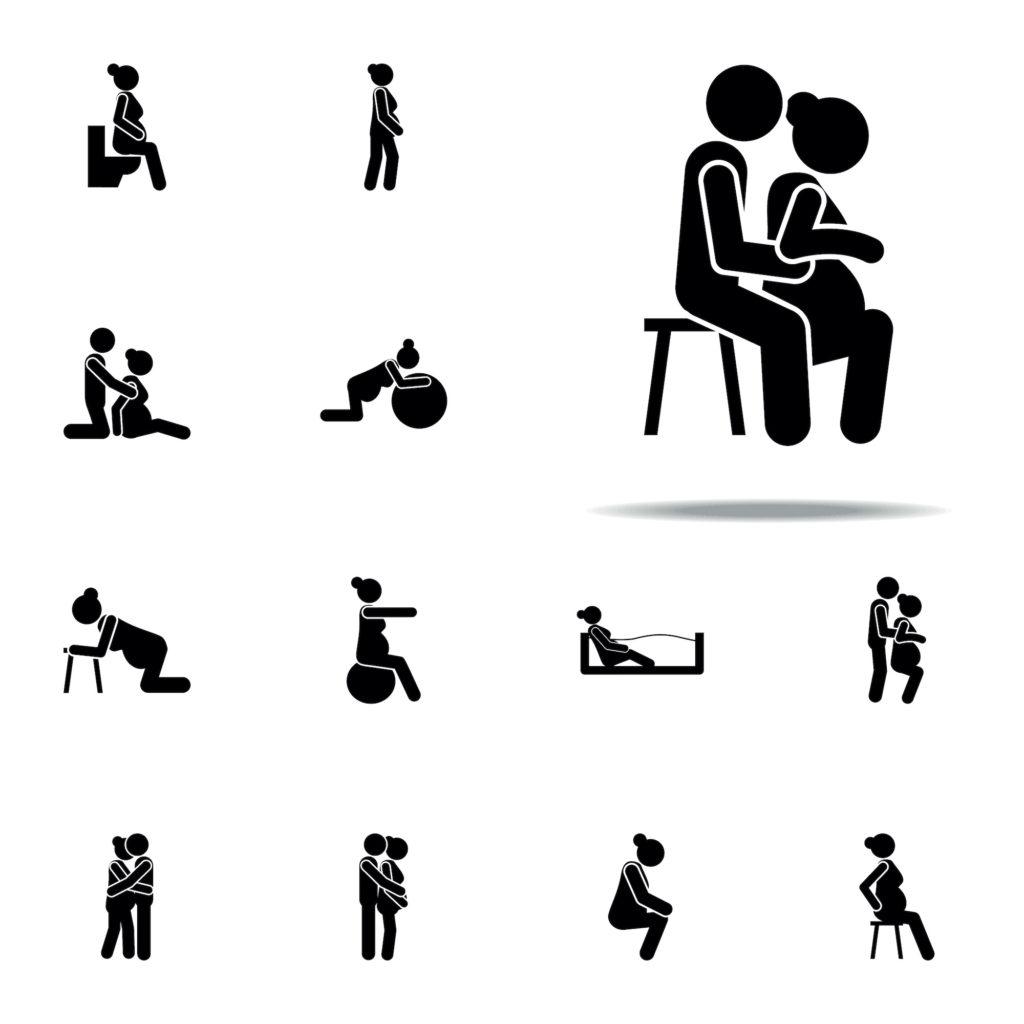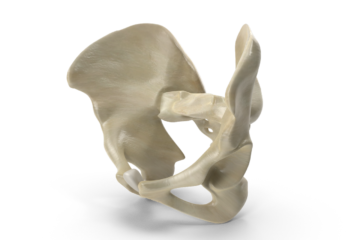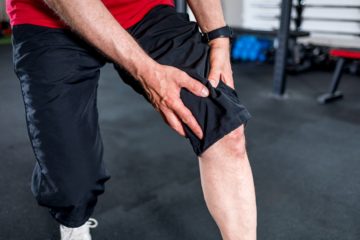Labour and birth can be made easier or harder depending on your positioning and movement.
Before we elaborate on positioning, let’s do a quick recap on the different stages of labour.
Stage 1 labour
When your contractions first start. These can start off quite sporadic, and as labour progresses they become more regular. There is no saying how long this stage can last. The best is to treat it like a marathon and conserve your energy in between contractions.
In this stage, the uterus is contracting and pulling to help move the baby down, the cervix is also dilating so that the baby can soon move through the birth canal.
Stage 2 labour
This is when you have reached the 10cm cervical dilation.
Baby is now ready to move through the birth canal. Your contractions have become much shorter and much more intense.
In the above two stages, the aim is to assist the body in what it is trying to do. As your uterus is trying to push baby down, you want to use gravity to assist it.

Upright vs Lying Down Positions
First stages of labour
Most of the evidence favours upright positioning which can include:
- standing
- walking
- leaning forward
- kneeling
- squatting
- sitting
- on hands and knees
Being upright and incorporating regular changes in position during the first stage of labour has been associated with a shorter first stage, stronger and more efficient contractions and less chance of needing an epidural.
Pushing phase of labour
You’re now ready to push. What do you do?!
Most hospitals prefer to have women birth on the bed. While this may limit you from walking or standing there are still a number of positions you can find comfort in such as kneeling, on hands and knees, squatting and side lying. When you are laying on your back, you are also limiting the 2 halves of your pelvis from moving freely and assisting in the space negotiation currently happening between baby and the hips. Think of your moving hips as them helping massage baby down. Laying on your back also has the effect of pushing your tailbone in which will act as a speed bump for baby.
You might also opt to labour in a birth pool, but know that all the same positions still apply.
Kneeling, squatting and on hands and knees have been shown to increase the pelvic outlet opening.
HOWEVER …
Squatting, birth stools and the lithotomy position (feet up in stirrups) have all been associated with an INCREASED chance of perineal tears. This is because these positions place a lot of pressure on a more vulnerable perineum during the pushing phase.
Alternatively, kneeling/on hands and knees and side lying have been shown to be PROTECTIVE against tearing .
Also worth noting, there is good quality evidence to show that warm compresses on the perineum during the pushing phase can help to reduce tears!

TAKE HOME MESSAGE…
Women should labour and birth in WHATEVER POSITION FEELS OF MOST COMFORTABLE TO THEM.
Seeing as every woman and every birth is different, the goal should be to achieve the greatest comfort and control for the mother, as well as the greatest benefit for both the mother and baby. Let yourself be guided by what your body is telling you.


